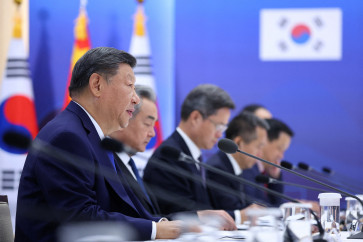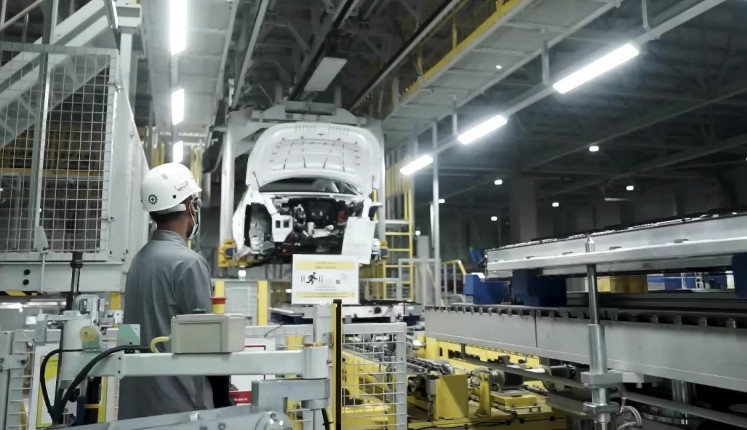Popular Reads
Top Results
Can't find what you're looking for?
View all search resultsPopular Reads
Top Results
Can't find what you're looking for?
View all search resultsAsia Pacific’s most innovative universities in 2018
Reuters’ annual ranking of Asia Pacific’s Most Innovative Universities, that identifies and ranks the educational institutions doing the most to advance science, invent new technologies and power new markets and industries.
Change text size
Gift Premium Articles
to Anyone
E
very scientist hopes for a "Eureka" moment — the jolt of sudden insight when a discovery becomes clear. But great advances always follow regular progress, and while individual researchers might strive for disruption, institutions are most successful when they're consistent and steady. That’s one conclusion of Reuters’ annual ranking of Asia Pacific’s Most Innovative Universities, a list that identifies and ranks the educational institutions doing the most to advance science, invent new technologies and power new markets and industries.
The most innovative university in the region, for the third consecutive year, is South Korea’s KAIST. Formerly known as the Korea Advanced Institute of Science and Technology, it is the nation’s oldest research-oriented science and engineering university, with campuses in Daejeon, Seoul and Busan. Established in 1971 by the Korean government, KAIST was modeled after engineering schools in the United States, and offers most of its courses in English.
Recent KAIST research highlights include the development of a highly durable platinum-based fuel cell catalyst that removes particulate matter from the air while it is in operation, an innovation that could lead to more efficient electric vehicles that reduce pollution when driven. KAIST once again earned its first-place rank among the APAC’s most innovative universities by producing a high volume of influential inventions. Its researchers submit more patents than any other university on the list, and those patents are frequently cited by outside researchers in their own patents and papers. Those are key criteria in Reuters ranking of Asia Pacific’s Most Innovative Universities, which was compiled in partnership with Clarivate Analytics, and is based on proprietary data and analysis of indicators including patent filings and research paper citations.
Read also: UI, ITB among Asia’s top 100 universities for 2018
Japan’s University of Tokyo takes the runner-up spot, moving up one rank from 2017. Korea’s POSTECH takes third, also moving up one, and Seoul National University comes in fourth after dropping two. Tsinghua University (#5) is the highest-ranked university in China, up one from last year. Osaka University (#6), Kyoto University (#7), Sungkyunkwan University (#8), Tohoku University (#9) and the National University of Singapore (#10) round out the top 10.
Only three new institutions appear on the list this year, all of them based in China: the China University of Mining & Technology (#56), Shandong University (#67), and Xiamen University (#74). The region exhibits a remarkable consistency, unlike Europe and North America: In contrast, Reuters’ 2018 ranking of Europe's Most Innovative Universities featured 15 new entries.
Overall, the same countries that dominate Asian business and politics dominate the ranking of APAC’s Most Innovative Universities. Chinese universities account for 27 of the 75 institutions on the list, more than any other country. South Korea comes in second with 20 institutions, and Japan is third with 19. Australia has 5, Singapore has 2, and India and New Zealand each have 1.
In addition to adding the list’s only new universities, China saw its domination of the list increase slightly, from 25 institutions in 2017 to 27 in 2018. They’ve done this by increasing their patent input dramatically. In 2016 ranked Chinese institutions filed an average of 128 patents during the list’s five year window; in 2018, they filed 160. That’s a 25% increase in just three years. Still, the nation continues to be held back by how rarely it files patents abroad. On average, Chinese universities on the list filed just 6.7% of all their patents with global authorities in the U.S., Europe and Japan, compared to 34.9% for Japanese universities and 20% for all non-Chinese universities in the ranking. Experts say Chinese academic and commercial institution are filing more patent applications than they used to. “Twenty years ago China was viewed as a pirate nation when it comes to IP, but that is changing,” says Mark A. Lemley, a professor at Stanford Law School and director of the Stanford Program in Law, Science, and Technology. “The Chinese government has decided to push innovation, perhaps for economic reasons and perhaps for strategic ones.... [and] patenting follows from that.”
Some nations underperform on the ranking because of the way they organize their university systems. Despite boasting the world’s second-largest population (more than 1.28 billion) and one of its largest economies, only one Indian university appears in the top 75, the Indian Institutes of Technology (#71). IIT is a network of 23 universities which centralizes its patent administration, so it's not always possible to identify which constituent university was responsible for what research. As a result, Reuters ranked the entire system as opposed to individual universities. World-class campuses like IIT Delhi and IIT Bombay may have ranked much higher on the list if they weren’t grouped in with smaller and newer institutes like IIT Tirupati and IIT Palakkad.
Read also: Google launches scholarship for Indonesian university students and teachers
To compile the 2018 ranking of the Asia Pacific region’s most innovative universities, Clarivate Analytics (formerly the Intellectual Property & Science business of Thomson Reuters) began by identifying more than 600 global organizations that published the most articles in academic journals, including educational institutions, nonprofit charities and government-funded institutions. That list was reduced to institutions that filed at least 50 patents with the World Intellectual Property Organization in the period between 2011 and 2016. Then they evaluated each candidate on 10 different metrics, focusing on academic papers (which indicate basic research) and patent filings (which point to an institution’s ability to apply research and commercialize its discoveries). Finally, they trimmed the list so that it only included universities in East Asia, South Asia and Oceania, and then ranked them based on their performance.
Of course, the relative ranking of any university does not provide a complete picture of the scope of its researchers’ work. Since the ranking measures innovation on an institutional level, it may overlook particularly innovative departments or programs: a university might rank low for overall innovation but still operate one of the world’s most innovative computer science laboratories, for instance. And it’s important to remember that whether a university ranks at the top or the bottom of the list, it’s still within the top 75 in the region: All of these universities produce original research, create useful technology and stimulate the global economy.
To see the full methodology, visit this website.







